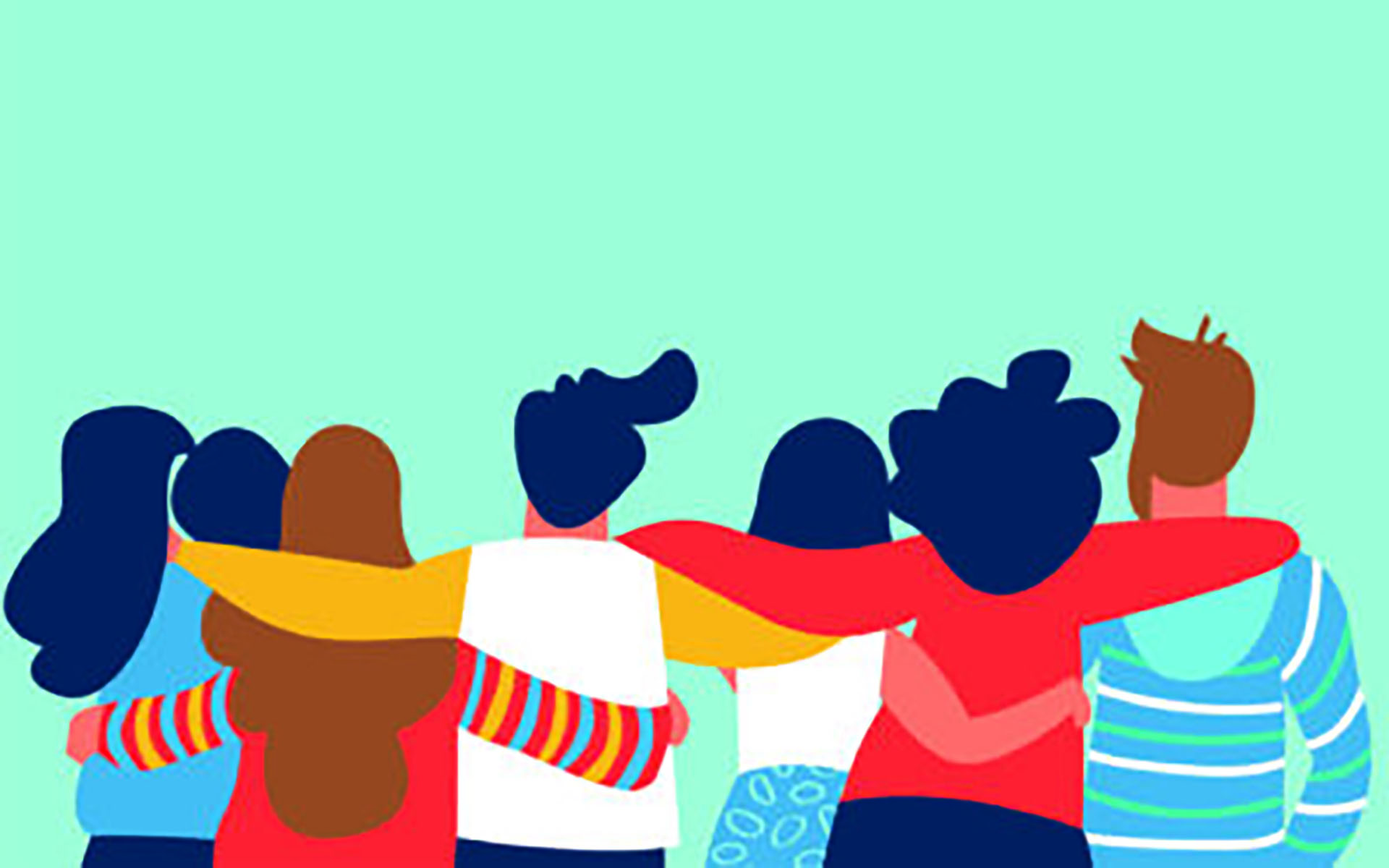A contemplative technology that has been invaluable to me over the years is recognizing aspects of the personality. This tool is a way to acknowledge that we have different forms of our psyche and that each has its own set of beliefs, assumptions, and fears. It’s a tool that can create a lot of space. This contemplative technology helps to lovingly invite the questions: Who am I? Who am I truly?
When we’re identified with any of the various forms of the conditioned mind, who we perceive ourselves to be feels solid, fixed, even permanent. When we’re identified, it leads not only to treating ourselves in a particular way but also to treating others in a particular way. The conditioned mind is quick to grab onto ideas and beliefs as if they’re unshakable, as if they are reality. In this grabbing we lose the remembrance of who we truly are.
The conditioned mind is quick to grab onto ideas and beliefs as if they’re unshakable, as if they are reality. In this grabbing we lose the remembrance of who we truly are.
With this contemplative practice, we notice that we have a part of us who might love a certain something, another part of us who might resist that same thing, and yet another part who doesn’t care about that thing at all. This overall awareness of the various parts of ourselves allows for an experience of harmony that isn’t possible when we are bouncing through various experiences of total identification with these different aspects of the personality.
If you can see clearly that you have a part of you who [ fill in the blank] and another part of you who [ fill in the blank], then you’re not fully identified with believing that either of these parts of you are, in fact, the whole of “you.” They are aspects of being. They are expressions of being—each a wave in a vast ocean among many waves.
You are the ocean.
How does your experience of yourself shift when you recognize that you are not one limited, contained, constrained wave? What constructs about who you might have previously seen yourself to be begin to crumble? What is the result of recognizing that you refer to all these various parts of yourself as “you”? What is the result of seeing that you experience all these various parts as “you”?
Delving into the Practice of Inquiry
When we look beyond our identification with all the different aspects of the personality, throughout the shape-shifting and changing, what remains?
What is constant?
What has been the same throughout your entire life?
So much has changed form. What was the same when you were five years old, ten years old, fifteen, and now?
What has remained untarnished? What has never been broken?
What is actually unbreakable?
This is inquiry. It’s not about the conditioned mind figuring out the right answer. It’s not about noodling. Let these questions be prompts that guide you to your own direct experience.
Let yourself find out, in your own direct experience, what is always true—in all times, in all circumstances, in all spaces. In a world in which everything is always changing, what remains the same?
The Veiling of Being
When we are identified with the ego, we seek externally. As we look outward for peace or contentment, our true sense of self gets mixed up with the content of our lives. We believe we’ll get to experience contentment once we [ fill in the blank], or once we have [fill in the blank]. Many different aspects of the personality get ignited in our search for what we all long for: peace, contentment, happiness, ease. Coping mechanisms kick in. Survival strategies cloud the sky.
No aspect of the personality is bad or wrong. However, when we’re identified with any given aspect, our experience of life becomes limited. When identified with one of them, who we truly are is veiled. As you learn to recognize when you are identified with a particular aspect of the personality, you have the opportunity to remember that this singular experience is not the whole of you but rather one wave in a larger sea. When we disidentify with an aspect of the personality, we are freed to recognize and remember ourselves as the ocean.
We believe we’ll get to experience contentment once we [ fill in the blank], or once we have [fill in the blank].
How do we disidentify from an aspect of the personality? Through Love.
Every aspect of the personality has a different set of characteristics, beliefs, assumptions, fears. And they are all longing for Love and searching for happiness. Even if it doesn’t appear that way, the wanting and the seeking are always the same at the core. At the end of the day, all these seemingly separate expressions of the personality long to return to being.
How we relate to ourselves, each other, and the world depends on “who” we are identified with. For example, I have a part of me that my husband, Vineet, nicknamed Justice Judy. This part of me has very dogmatic views about what’s right and wrong. Justice Judy wields a weapon; she is unafraid to stand up for justice and has no fears about the fallout. That said, there is fallout from being identified with her. Her view is myopic. When I’m identified with her, all I see is the duality of good/bad and us/them. I’m quick to fight for justice and willing to punish. While the fight may lead to a temporary experience of “winning,” it never leads to shared understanding. It never leads to the kind of justice I most deeply long for. It never leads to the resolution of the argument, the releasing of it, to peace. It only leads to a short-term win that is likely to be followed by a short-term loss. And the fight has an expensive price: my connection to others, my connection to the world, my connection to myself.
From the Personal to the Collective
Consider for a moment how these different aspects of the personality that we all have are bouncing off one another in a global context. How would town hall look if the meetings led with creating an environment of CARE (confidentiality, acceptance, reverence, and empathy) and privileged presence prior to punditry? How would Congress look?
While I have no direct experience working in government, I can report about the transformational power of disidentification in the classroom. When students can rest in an environment of CARE, they naturally disarm. Since being identified with various aspects of the personality is often simply a way of being armored, this disidentification allows for vulnerability, openness, connection, and belonging.
To be clear, disidentifying with a particular aspect of our personality doesn’t make us helpless or useless. Just because I choose to disidentify with the “Justice Judy” part of myself doesn’t mean I’m rendered limp when it comes to my deep care for living in a just world. That false belief is simply the other side of the duality. When we step beyond the duality of vigilante/passive witness, we can manifest our care on behalf of the recognition of our shared being rather than as the felt sense that we’re separate, victimized. What this ends up looking like can take infinite forms. It’s freeing to realize that we can be involved in politics or grassroots movements, for example, without the habitual tendency to maintain the distortions, the recurrent identification with limited views of ourselves that is the source of so much harm—harm to self, harm to other.
Disidentifying with a particular aspect of our personality allows for the truth of our being to surface through our actions. Identifying and charging ahead with the aspect of myself who is “The Politician,” exclusively, for example, veils shared being. However, recognizing that I am this shared being first, one that in this moment is using politics as a vessel for change, allows for change that is wholistic, universal, and nips off the story and complications of separation before it can even start. Again, it’s not what but how.
If I want the world to be free, I must engage with it from the experience of my inherent freedom.
Through practice, the seeming fragments of ourselves have the opportunity to realign with Love and truth, to return home, to act from being.
Through practice it becomes possible for the various aspects of the personality to live in service of Love and truth rather than act out the ego’s survival strategies and coping mechanisms. Through practice, the seeming fragments of ourselves have the opportunity to realign with Love and truth, to return home, to act from being. In the alignment, we experience harmony. As we return to presence, the various parts of ourselves are given permission to coexist and we experience the peace that is sometimes eclipsed by our identification. Awareness, or pure consciousness, has infinite room for all parts of ourselves, for all experience. And it resists nothing. Why?
Because we are this awareness, and it is our very nature to let go of our resistance.
Can you relate to there being one part of you that feels one way and another part of you that feels another? If so, how do these parts of you interact with each other? And how do these parts of you interact with others? And the world?
Who Do You Bring to the Table?
In the same way that seeing how all the different aspects of the personality interact internally supports our personal liberation, the possibility for collective liberation opens as we see how our collective identities interact externally. Consider the interface between various groups working toward collective change, just as an example. Two groups may reach different conclusions about the significance of the same facts. When is there so much identification with belief on either side that the only result is fighting with each other, furthering the arguments and conflicts that encourage separation?
For us to have true and lasting change within our movements for ecological and social justice, it’s paramount that we have the opportunity to see our own conditioning clearly. It’s paramount that we know what we’re bringing to the table—the part of me who feels entitled, the part of me who feels powerless; the one who is hopeful, the one who is angry.
What shifts in your interaction with another when, for example, you meet them from a deep recognition of who you truly are rather than being identified with the part of you who is righteous? What shifts when, even though the person you might be interacting with is identified with a particular aspect of their personality, you keep your eye on who they truly are? What shifts when you don’t let this knowing drift away?
Excerpted from the book The Heart of Who We Are: Realizing Freedom Together by Caverly Morgan. Copyright © 2022 Caverly Morgan. Reprinted with permission from the author and the publisher, Sounds True.
read more
How to Find Common Ground—in Spite of Differing Views
What do you do when people have the audacity to think differently than you do? Here’s how you can stay open and curious in moments of disagreement, instead of getting stuck in defensiveness.
Read More
A 12-Minute Meditation to Explore What’s True
In this episode of 12-Minute Meditation, Mindful founding editor Barry Boyce leads us in an inquiry practice to become aware of our preconceptions, loosen our grip on what we think we know, and explore what’s true.
Read More
Coming Undone But Not Unmade
Accepting the finitude of our lives can grind our plans to a halt and make every single moment more precious, writes Kate Bowler, especially when it’s impossible to know how many moments we have left.
Read More








